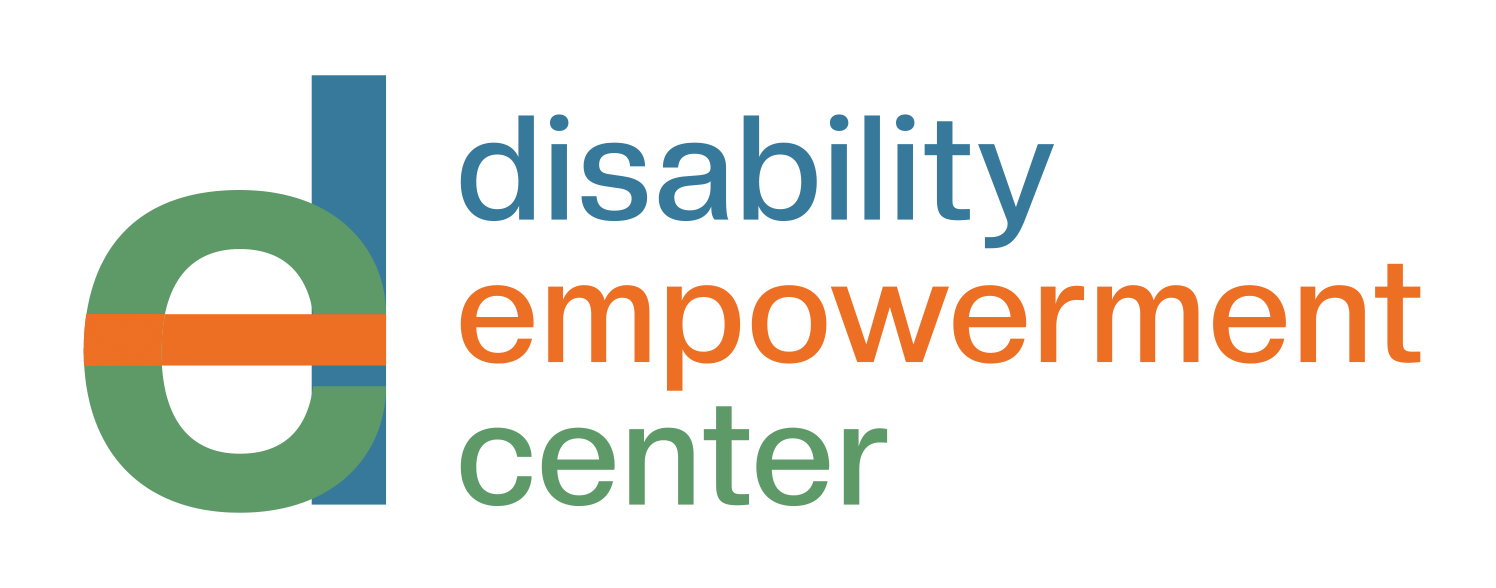Meet our Executive Director
Kimberly Meck (she/her) just celebrated her ninth anniversary leading Disability Empowerment Center. We interviewed her about how the organization has changed and what brought her into this work.
What was the organization (called the Alliance of People With disAbilities at the time) like when you joined in 2015?
We had an office in Bellevue and one in Seattle two blocks from where we are now. The physical accessibility in the space was awful. It wasn’t even big enough for power chairs. We had 20 employees, and every single employee worked part time or less. We were only open four days per week. And there wasn’t a lot of collaboration between disability services in King County.
What brought you into disability advocacy work?
I was working for a different company on a project that was funded by the federal government and funding was cut. We worked regularly with the Division of Vocational Rehabilitation (DVR) and one of the counselors kept telling me, ‘You need to come see me.’ And I told her, ‘I don’t have a disability. DVR can’t help me.’ She said ‘Everyone has a disability.’ And, actually because I have a shoulder injury, I ended up being able to work with DVR. Through that, I saw a psychologist and that’s when I was diagnosed with my ADHD. Getting that diagnosis as an adult was eye-opening. It gave me all of the explanations for what I went through as a kid.
I went to work for a for-profit program and at the same time I went to school for my master’s degree. DVR supported me through all of that. I graduated in 2014 with a master’s in rehab counseling and became Executive Director here in 2015.
What have been the biggest challenges?
The systemic marginalization. The complete ignoring of the disability community. The lack of consistent accessibility standards. The public perception of people with disabilities.
Bringing community into disability advocacy has been absolutely essential. Because it’s less one person yelling on a street corner and more of a structured march toward gaining the freedom and independence that people with disabilities so desire and so need and deserve.
Authentic community engagement is the only way to design something that will fit the needs of all community. We still fight for it today. But, it’s getting better.
What are you most proud of now?
Big picture, awareness is growing. I think that by being more visible in the community, people are more engaged. They’re seeing more and more how disability is not something to fear. Accommodations aren’t this huge costly thing that they’ll never be able to achieve. It’s something that can be done easily and simply in a lot of cases.
In terms of our operations, within my first two years, we were able to be open five days per week and all the staff who wanted to work full time were. We were paying a living wage and everyone who worked 20 hours or more was getting full benefits.
I’m proud of what my staff is able to achieve. I think that’s what I’m most proud of. I’m proud of the confidence that they have. That they can accomplish what they set out to do. That comes, in part, from leadership.
Leadership is not being a boss. It’s not being bossy. All too often people think that being a boss is being bossy. When in reality it’s just helping the people who work for you to be the best that they can be.
What are you excited for in the next several years?
I guess the thing I’m most looking forward to is seeing more and more people understand what we mean when we’re talking about community and disability and accessibility and inclusion and the intersections of it all. I love when people ‘get it.’

